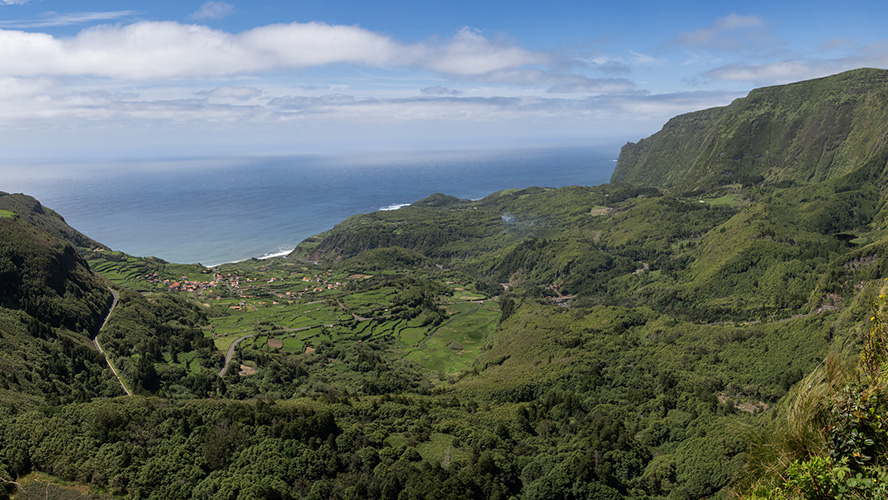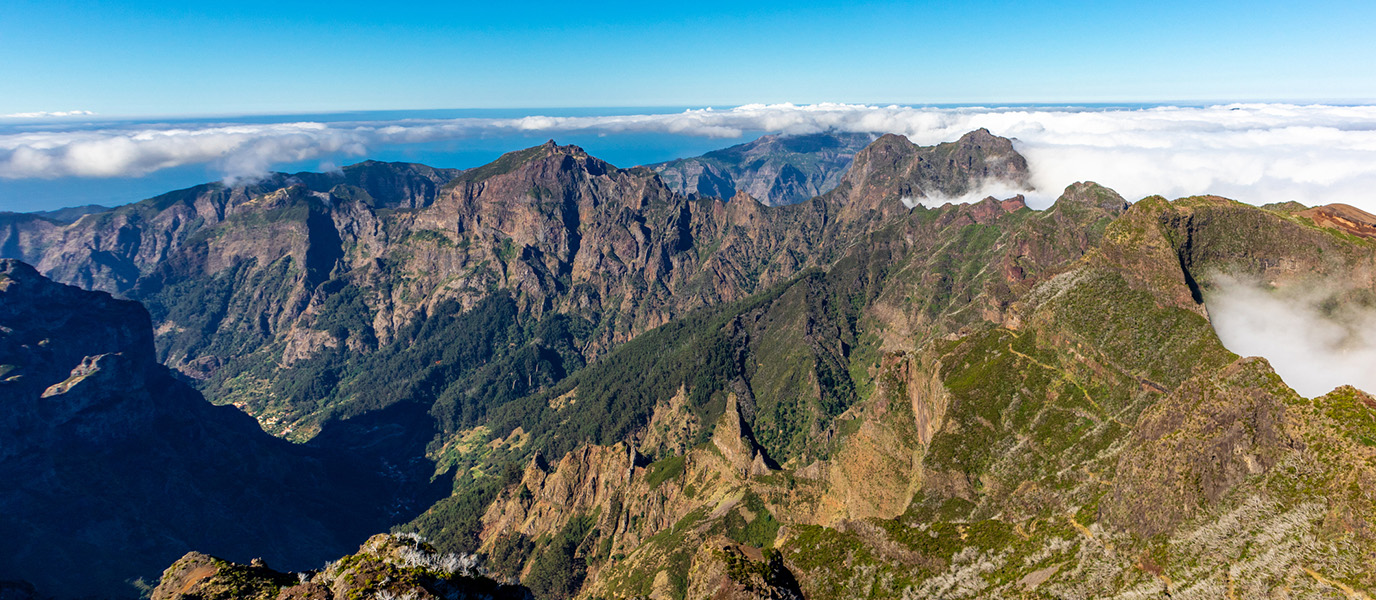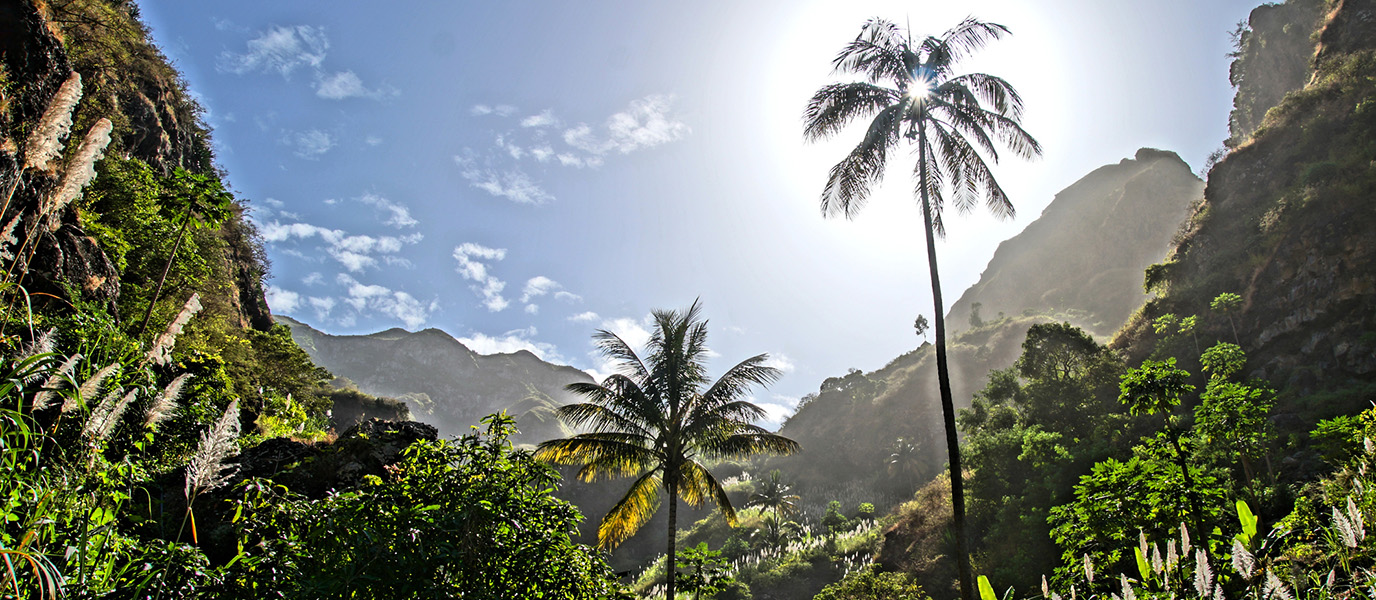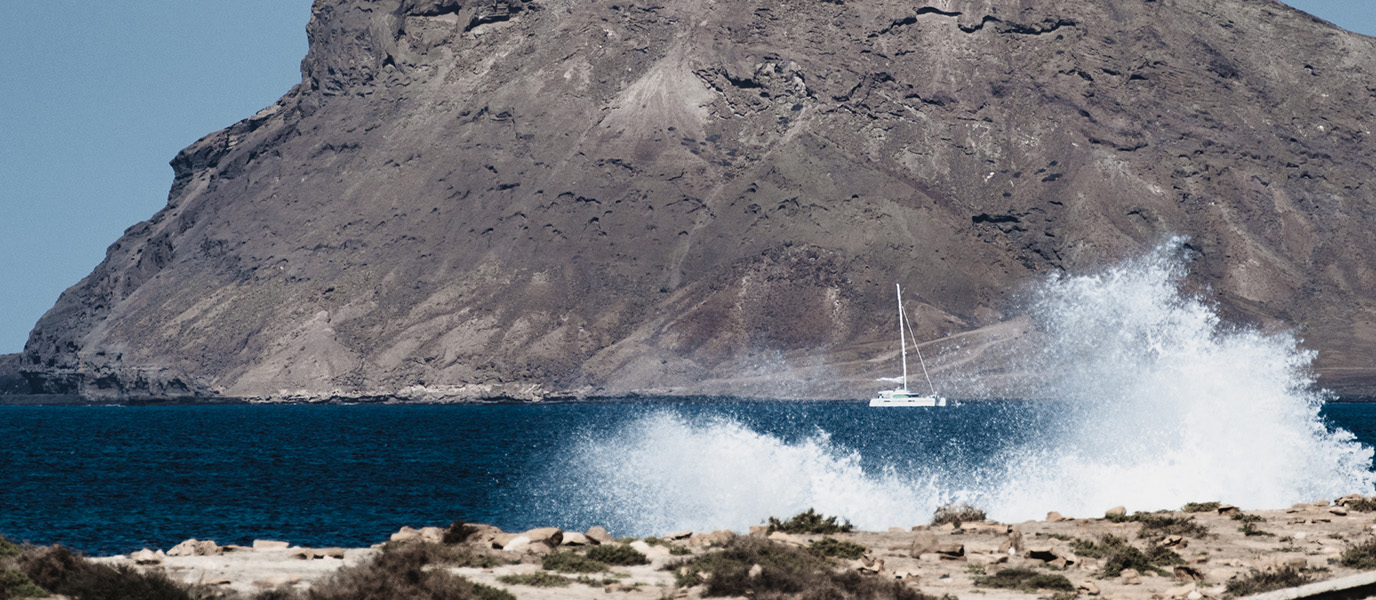Cabo Verde, an archipelago sitting in the middle of the Atlantic Ocean, is a true paradise for hiking lovers. Comprising ten volcanic islands, Cabo Verde offers a geographic and climatic diversity that make each hiking route different to the last, ranging from the summits of volcanoes to fertile verdurous valleys and arid landscapes.
It is so much more than a typical sun and beach destination. Rather, it is a destination where you can connect to the country’s rural spirit through the medium of hiking and discover the intricacies of each island. The country’s trails weave their way through mountains, cliffs, plains and old colonial tracks, giving visitors the golden opportunity to discover an unspoiled landscape and a vibrant rural and agricultural character that shows no signs of dwindling. With a moderately warm year-round climate, visitors can go hiking in Cabo Verde at any time of year. However, the dry season, which lasts from November to June, will likely offer fewer interruptions. Soundtracked by the motion of the Atlantic waters, hiking in Cabo Verde is a fantastic chance to disconnect from the hustle and bustle of modern life and discover landscapes that are trapped in time.
A diverse and natural hiking destination
The volcanic Cabo Verde archipelago is a set of ten natural islands that offer optimal conditions for hiking. These islands offer a plethora of different landscapes, ranging from rugged mountains and volcanic peaks to fertile valleys and arid plains. This makes Cabo Verde a rich and varied destination that is a true hiker’s paradise. The geological formation of these islands has shaped a rugged terrain that is perfect for exploring on foot, offering next-level panoramic views.
In Santo Antão, the greenest island of the archipelago, hikers can explore lush valleys punctuated with sugar cane and mango plantations, where small streams run amid agricultural terraces that are staggered down steep slopes. This island contrasts greatly with the arid, almost lunar landscape of Fogo, where the majestic Pico do Fogo—Cabo Verde’s highest peak, standing at an altitude of 2,829 metres above sea level—dominates the horizon. This diversity of ecosystems, ranging from cloud-covered mountains to vast coastlines that are lashed endlessly by the Atlantic, offers an endless range of possibilities.
Many hikers are also attracted to Cabo Verde for its impressive flora and fauna. In the archipelago’s greenest islands such as Santiago and Santo Antão, it is possible to find indigenous plant and bird species that can’t be found anywhere else on the planet. Examples include the contra-bruxas flowers (that even appear on local currency!), the marmolano (a tree that can reach 12 meters tall) and the Caboverdean shearwater and sparrow. The vegetation changes drastically as you climb higher, where you’ll find a greater prominence of dramatic, arid landscapes. Each trail in Cabo Verde reveals a new natural paradise, providing a new perspective of the enormous diversity offered by this small archipelago in the middle of the Atlantic.
Hiking in Cabo Verde: islands with tropical landscapes, volcanic terrains and colonial throwbacks
Santo Antão: a verdurous paradise of trails and mountain landscapes
Santo Antão is a hiking destination par excellence in Cabo Verde. Considered the archipelago’s greenest island, its mountain landscapes and deep valleys make it a genuine bucket-list destination for hiking lovers. The Vale do Paúl, one of the island’s most iconic natural features, serves as a tropical garden that is begging to be explored on foot. This fertile and green valley surrounded by steep mountains, small villages and waterfalls is perfect for those who wish to remain close to local life. Its trails will take you through sugar cane, mango and papaya plantations, while small streams will cross your path in a place that remains largely undiscovered by mass tourism.
Another popular trail on Santo Antão is the Rota da Cova, which begins in the crater of an ancient volcano and winds down its slope until it reaches the Vale do Paúl. This trail rewards hikers with wonderful panoramic views of the Atlantic, before weaving its way through rural villages and agricultural terraces that look like they’re suspended in mid-air. This is a great route for those looking to embrace nature while discovering the local culture.
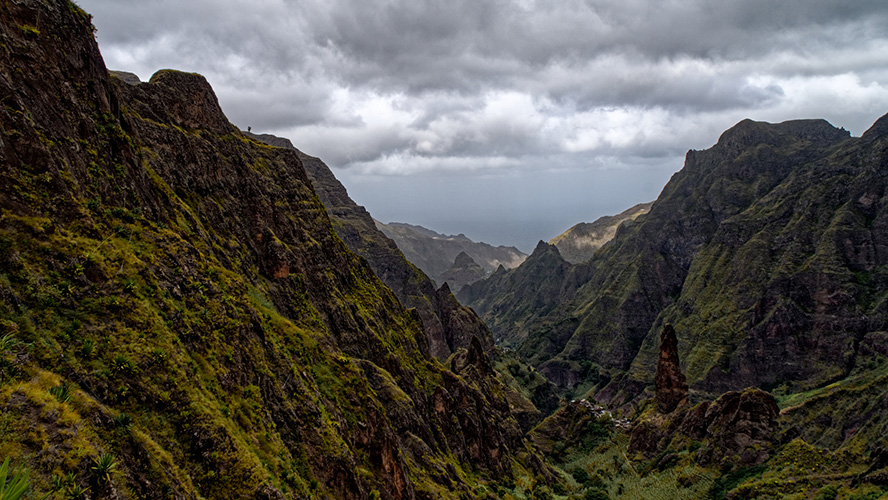
Fogo: Cabo Verde’s most volcanic island
When you think of Fogo, it’s impossible not to think of volcanoes. This island is home to the impressive Pico do Fogo, which is Cabo Verde’s tallest mountain. If you’re up to the challenge, a hike to the summit is a memory that you’ll cherish forever. The landscape changes radically during the ascent, transitioning from arid lands to volcanic ash fields. While the route to the summit is demanding, hikers will be rewarded for their efforts with incredible views of the volcano’s crater and, on clear-sky days, the surrounding islands.
However, Fogo offers much more than just a volcano. It also boasts several other fascinating trails, such as those that pass through the Chã das Caldeiras Natural Park, where lava fields and black stone houses form an almost lunar landscape. As you delve further into this arid landscape, you’ll be able to appreciate the magnitude of the volcanic activity that shaped the island. The area of Chã das Caldeiras is comprised by two villages located at the foot of the volcano: Portela and Bangaeira, the latter of which was totally buried by the most recent eruption in 2014. The chance to interact with the local people who have adapted to living in such an inhospitable place adds a human and cultural dimension to this memorable hike.
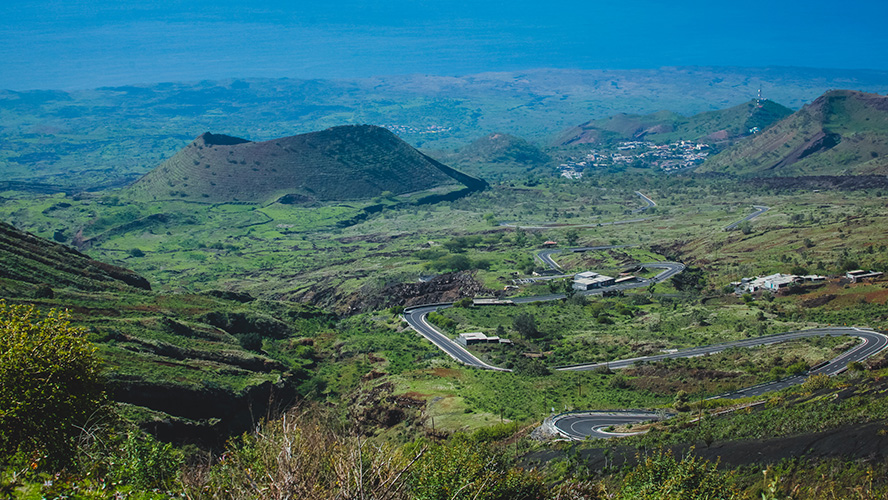
Santiago: cultural routes between colonial remains and traditional villages
Cabo Verde’s largest island, Santiago, manages to strike the perfect balance between nature and culture. On this island, hikers can explore natural landscapes and historical vestiges that speak of the country’s rich heritage. One of the most popular trails passes through the Serra Malagueta, a natural park offering wonderful views of the Santiago’s rugged coastline and mountainous inland areas. Along this route, which passes through areas of indigenous vegetation, hikers are rewarded for their efforts with the opportunity to observe local wildlife, such as indigenous birds that inhabit the mountain’s forests. Santiago has a wide range of hiking routes, ranging from easy trails to challenging ascents to the summits of mountains. One trail goes all the way to the Pico da Antónia, which is the island’s highest peak, standing at 1,064 metres above sea level.
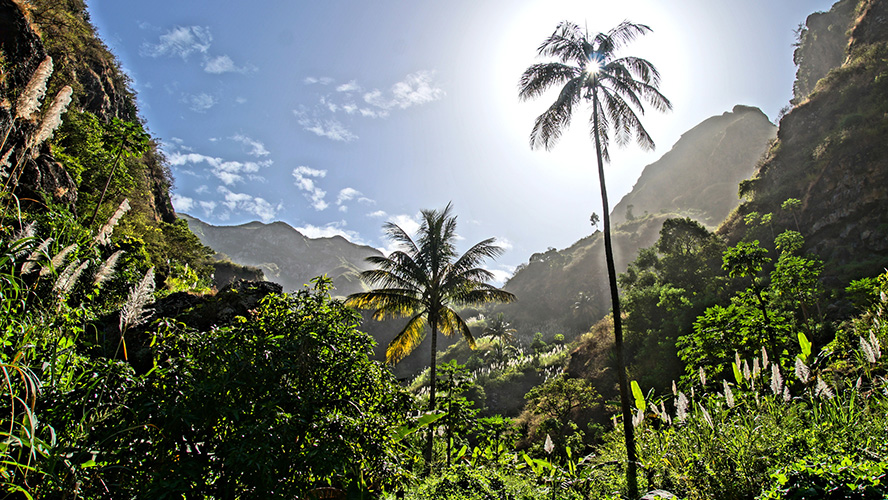
Another popular hiking destination in Santiago is Cidade Velha, the former capital of Cabo Verde. This city, which was founded in 1462, is recognised as a UNESCO World Heritage Site. After leaving the city the trails rise into the nearby hills, where hikers can explore ancient fortresses and colonial ruins while enjoying panoramic views of the Atlantic Ocean. Other hiking trails that begin in Cidade Velha pass through the Vale de Ribeira Grande, where hikers will find traditional villages surrounded by green farmland, such as Salineiro and Calabaceira. Hikes through this valley offer the chance to delve into the authentic rural life of Santiago and experience the warm local hospitality, which people from the island refer to as ‘morabeza.’
Other islands: lesser known, but by no means less captivating
Although Santo Antão, Fogo and Santiago are the most popular hiking islands in Cabo Verde, some of the archipelago’s other islands also boast impressive trails. In São Nicolau, for example, Monte Gordo is the perfect destination for those looking for challenging trails where they are unlikely to come across too many other hikers. The trails on this island pass through mountains covered in indigenous vegetation and weave their way through small villages, where centuries-old traditions are maintained by the local residents.
Another option is Brava, known locally as the ‘island of flowers’ due to its exuberant plant life. Its trails, which wind through flowery valleys and along coastal cliffs, offer a peaceful and relaxing hiking experience, which is ideal for those looking to come into close contact with nature.
